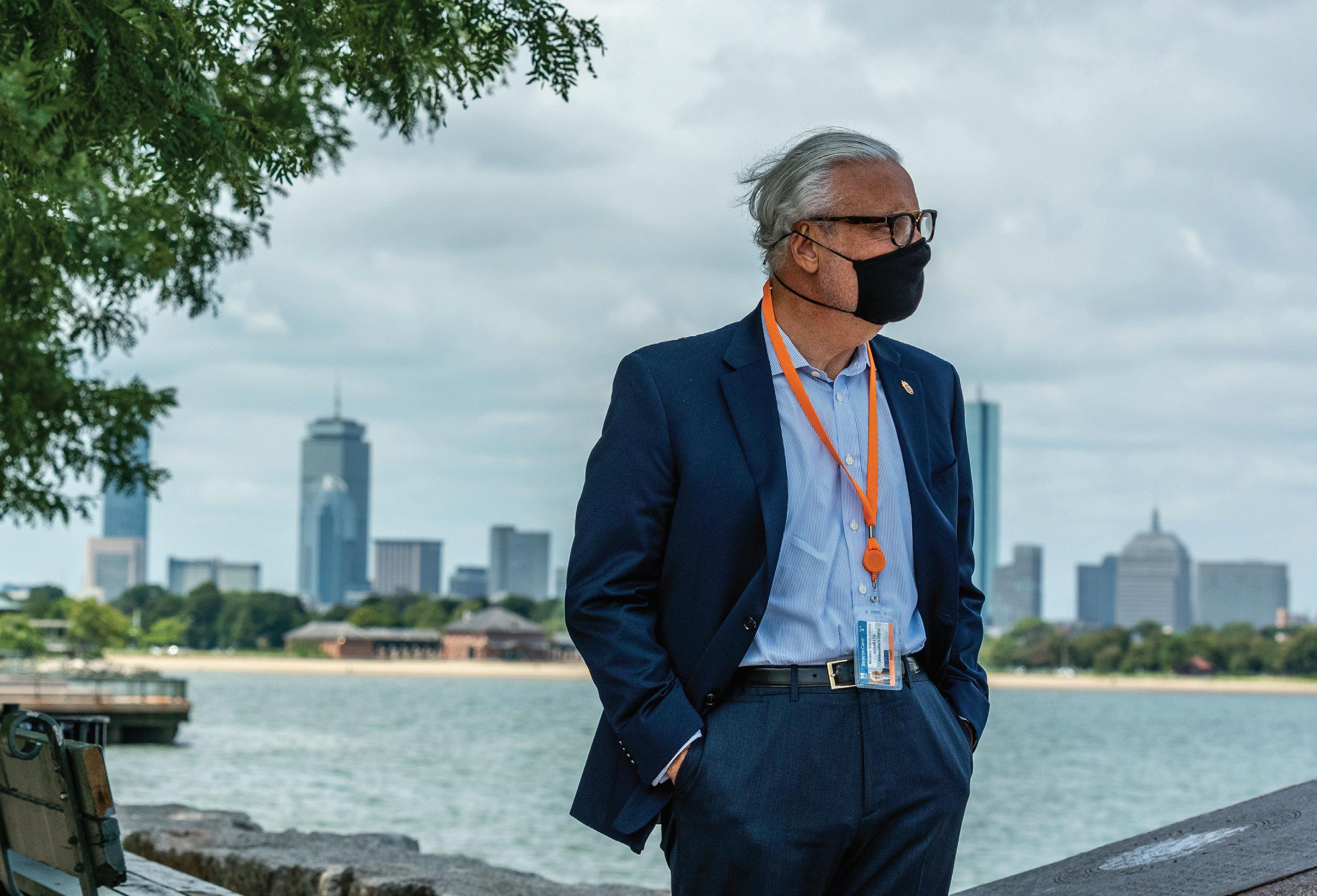At the Site of the First Thanksgiving UMass Boston Archaeologists Find the Pilgrims’ Original Compound and Offer New Insights into Relations Between English Settlers and Wampanoag. By Colleen Locke
Four hundred years after the first Thanksgiving—a three-day harvest feast celebrated in 1621 by a band of desperately struggling English settlers and a group of neighboring native Wampanoag— it remains shrouded in many mysteries. Where exactly did the feast take place? What were relations between the colonists and native inhabitants like? Now, as the 400th anniversary of the first Thanksgiving draws near, UMass Boston researchers are starting to provide answers. In 2013, David Landon, associate director of UMass Boston’s Andrew Fiske Memorial Center for Archaeological Research, launched an archaeological investigation into those questions with the cooperation of the Town of Plymouth and Plimoth Plantation, a living museum recreating life in the 17th-century settlement. He began with a search for evidence of the palisade that surrounded the original settlement where the first Thanksgiving probably took place. No one knew exactly where it had been built. “Historical accounts of Plymouth put the top of Burial Hill as the location of the first fort and meeting house,” Landon said. “There are no maps from the time period, and the first map that puts any
of the features of the original settlement on the ground isn’t until the 1870s. But there is an 1870s map that marks a location on Burial Hill. It says, ‘site of the first fort and meeting house.’” Graduate students from UMass Boston and around the country have been participating in an archaeological dig in search of the original settlement every summer for five weeks for the past seven years. The dig focused in two areas on Burial Hill separated by an 1830s burial vault. One of the goals of the project was to locate evidence of the fortification in time for the 400th anniversary of the city of Plymouth in fall 2020. The fast-approaching deadline helps explain why graduate student Linda Seminario G’23 remembers exactly where she was last year on the day that students in UMass Boston’s Archaeological Field School found evidence of the original palisade wall built to protect the Plimoth settlement. “I was digging in the cellar [of a 17th-century house], which is about as deep as I am tall,” recalled Seminario. “My friend whispers to me, ‘I think we found the palisade.’”
UMass Boston Fall 2020
■
17








